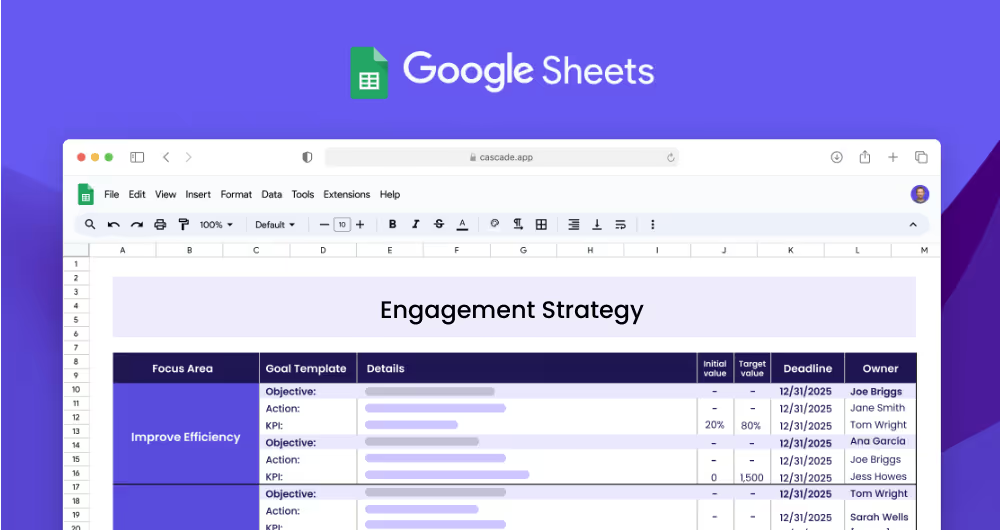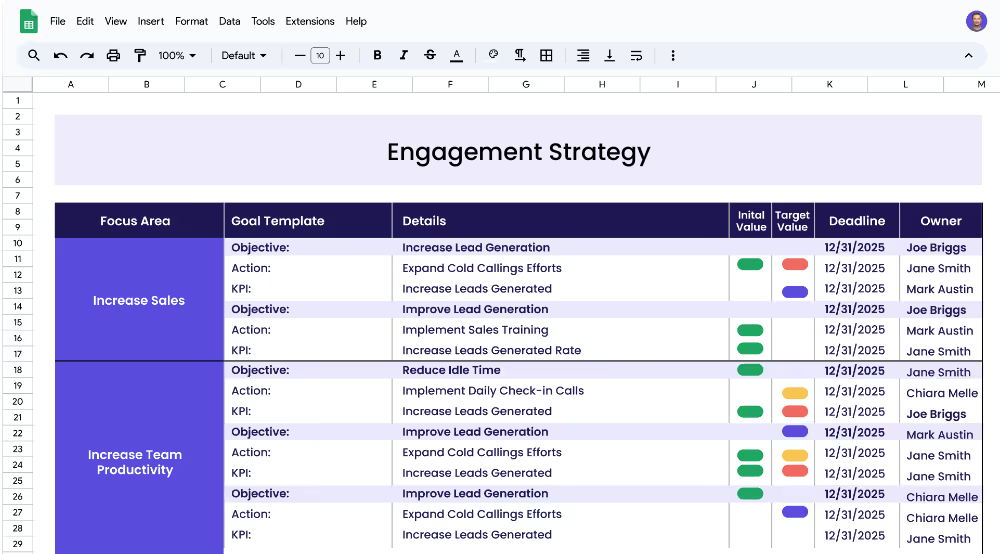An engagement strategy is a methodical plan of action for creating and maintaining positive relationships between an organization and its employees. It outlines the goals and objectives of the organization and provides employees with a framework for understanding how their individual roles contribute to the success of the company. By setting clear objectives and creating a plan to reach those objectives, an engagement strategy can help organizations engage their employees and foster a productive work environment.
Each focus area has its own objectives, projects, and KPIs to ensure that the strategy is comprehensive and effective.
This engagement strategy template is designed for HR and employee engagement teams in organizations of all sizes and industries to develop an effective employee engagement strategy that aligns with the company's objectives. With this template, you can create a comprehensive employee engagement strategy that helps you to motivate and retain your employees, and increase productivity and job satisfaction.
The first step in developing an effective engagement strategy is to define your focus areas. Focus areas are broad topics that define the goals of your engagement strategy, such as increasing employee engagement, increasing employee retention, and increasing communication. Your focus areas should be aligned with the overall objectives of your organization to ensure that your engagement strategy is effective and beneficial to both you and your employees.
Once you have defined your focus areas, you can then think about the objectives that could fall under each focus area. Objectives are specific goals that you want to achieve, such as increasing employee satisfaction or providing opportunities for professional growth. It is important to be clear and concise when setting objectives so that employees can understand what is expected of them.
Once you have identified your objectives, you can then set measurable targets, also known as key performance indicators (KPIs). These KPIs should be specific, measurable, and time-bound goals that you want to achieve. For example, you might set a KPI of increasing employee satisfaction from 68% to 92% in a certain period of time. Setting measurable targets for each objective will help you track your progress towards achieving your goals.
Once you have set your KPIs, you can then implement related projects to achieve those KPIs. Projects are specific actions that you can take to reach your KPI targets, such as implementing employee recognition programs or providing opportunities for professional growth. By implementing projects, you can ensure that you are on track to reach your goals.
If you’re ready to accelerate your strategy and see faster results, opt for Cascade Strategy Execution Software. Unlike spreadsheets, which may not provide the dynamic adaptability and real-time tracking you need, Cascade offers a comprehensive solution to enhance your strategic execution. Our platform facilitates a centralized approach, offering real-time updates, automated reporting, and visual dashboards for better visibility and control. Sign-up for free or book a demo with one of our strategy experts and discover how you can transform your strategic initiatives into measurable results.


